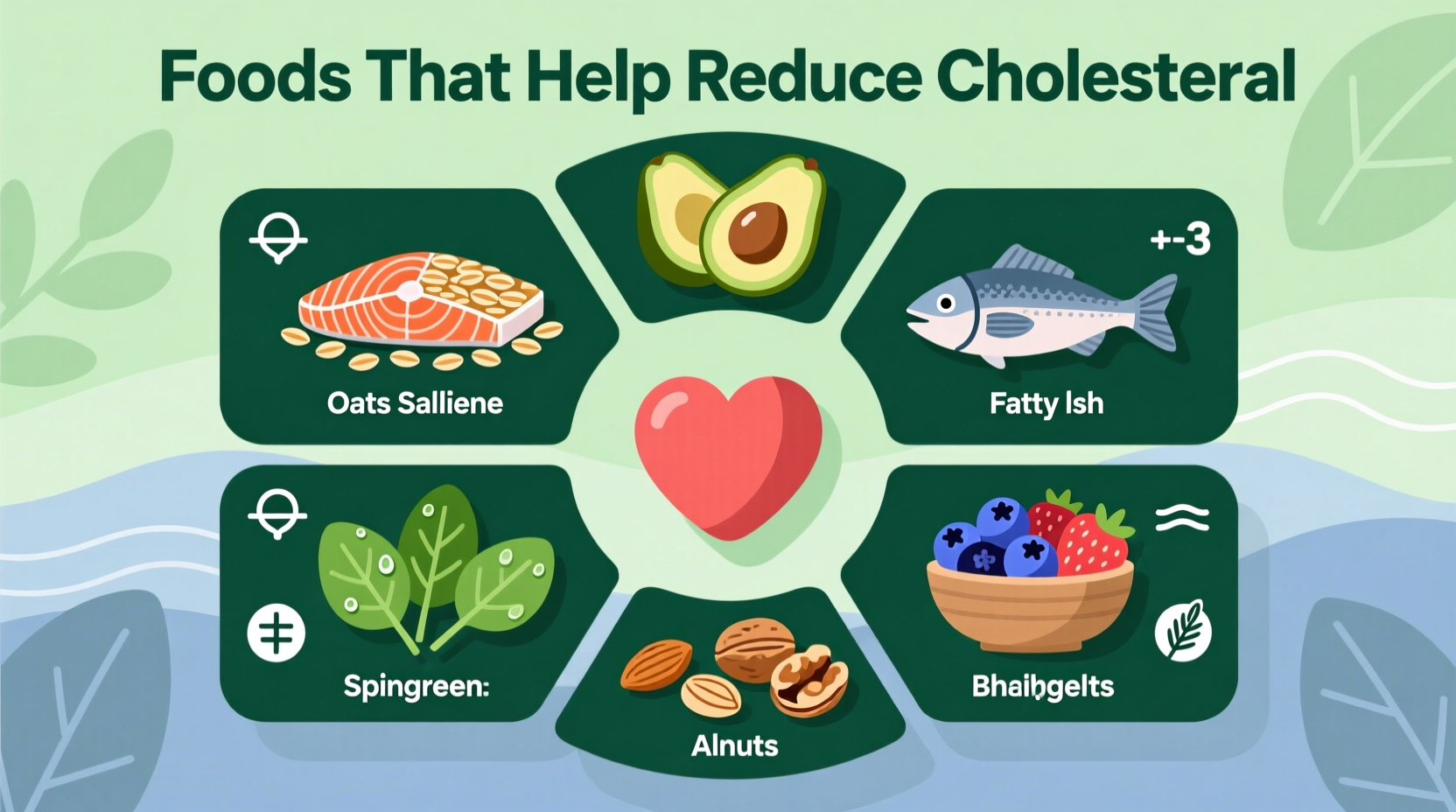Research shows that incorporating soluble fiber-rich foods like oats, beans, and lentils, plus heart-healthy fats from avocados, nuts, and fatty fish can lower LDL ("bad") cholesterol by 5-15% when consumed consistently as part of a balanced diet. The American Heart Association recommends replacing saturated fats with these cholesterol-lowering foods for optimal cardiovascular benefits.
Your Practical Guide to Cholesterol-Lowering Foods That Actually Work
Struggling with high cholesterol? You're not alone. Nearly 94 million American adults have total cholesterol levels above the recommended threshold. The good news: dietary changes can significantly improve your numbers without medication. This guide cuts through the noise to show you exactly which foods deliver proven cholesterol-lowering benefits based on current medical research.
Why Food Choices Matter More Than You Think
Cholesterol management isn't just about avoiding eggs or saturated fats. The real game-changer is incorporating specific foods that actively reduce LDL cholesterol through three key mechanisms: binding cholesterol in the digestive tract, replacing unhealthy fats, and providing compounds that improve your body's cholesterol processing.
Unlike medication that targets a single pathway, these foods work synergistically to improve your overall lipid profile. The Portfolio Diet study published in The American Journal of Clinical Nutrition demonstrated that combining four cholesterol-lowering food groups reduced LDL by 28%—comparable to starting statin therapy.
Science-Backed Foods That Lower Cholesterol
Not all "heart-healthy" foods deliver equal benefits. Here's what actually works according to clinical evidence:
| Food Category | Key Compounds | Effective Daily Amount | LDL Reduction |
|---|---|---|---|
| Oats & Barley | Beta-glucan fiber | 3g soluble fiber | 5-7% |
| Legumes | Soluble fiber, plant protein | 130g (½ cup cooked) | 5% |
| Fatty Fish | Omega-3 fatty acids | 2 servings/week | 4-6% (triglycerides) |
| Nuts (especially almonds) | Monounsaturated fats, plant sterols | 42g (1.5 oz) | 5-7% |
| Avocados | Monounsaturated fats, fiber | 1 medium avocado | 7-9% |
This evidence-based comparison comes from the American Heart Association's 2021 scientific statement on dietary guidance for cardiovascular health, which analyzed 119 clinical trials involving over 6,000 participants.
How to Implement These Foods Without Overhauling Your Diet
Starting Monday, try these realistic swaps that deliver maximum cholesterol benefits with minimal effort:
- Breakfast boost: Add 2 tablespoons of ground flaxseed to your oatmeal (provides 2g soluble fiber)
- Lunch transformation: Replace half the meat in your sandwich with smashed avocado
- Smart snacking: Keep pre-portioned almond packs (1.5 oz) at work instead of processed snacks
- Dinner upgrade: Use lentils to replace 25% of ground meat in sauces and casseroles
These small changes collectively provide the critical threshold of 10g of soluble fiber daily—the amount shown in NIH research to significantly improve lipid profiles within 4-6 weeks.

When Foods Aren't Enough: Understanding Limitations
While diet plays a crucial role, certain scenarios require additional approaches:
- Genetic factors: Familial hypercholesterolemia affects 1 in 250 people and typically requires medication regardless of diet
- Existing heart disease: Those with established cardiovascular conditions often need medication alongside dietary changes
- Medication interactions: Some cholesterol-lowering foods (like grapefruit) can interfere with common statins
The CDC's cholesterol management guidelines emphasize that dietary changes should complement—not replace—medical treatment when prescribed. Always consult your healthcare provider before making significant dietary changes if you're managing diagnosed high cholesterol.
Your 4-Week Cholesterol Improvement Timeline
Understanding the realistic timeline prevents discouragement and promotes adherence:
- Week 1-2: Implement dietary changes while monitoring how foods affect your energy and digestion
- Week 3-4: Begin noticing subtle improvements in post-meal fullness and reduced cravings for unhealthy fats
- 6-8 weeks: Most people see measurable LDL reductions of 5-15% on follow-up blood tests
- 3-6 months: Maximum dietary impact achieved when combined with other lifestyle factors
This timeline aligns with the American Heart Association's treatment guidelines, which recommend retesting lipid levels 4-12 weeks after initiating dietary changes.
Avoid These Common Cholesterol Diet Mistakes
Many well-intentioned efforts backfire. Steer clear of these pitfalls:
- Overloading on "cholesterol-free" processed foods: Many contain trans fats that actually raise LDL
- Skipping healthy fats entirely: Your body needs fats to process nutrients—just choose the right kinds
- Focusing only on dietary cholesterol: Saturated and trans fats impact blood cholesterol more than dietary cholesterol itself
- Expecting overnight results: Sustainable cholesterol improvement takes consistent effort over months
Building Your Long-Term Cholesterol Strategy
For lasting results, combine these food choices with other evidence-based approaches:
- Physical activity: 150 minutes weekly of moderate exercise boosts HDL ("good") cholesterol
- Weight management: Losing just 5-10% of body weight improves lipid profiles
- Smoking cessation: Quitting smoking increases HDL cholesterol by up to 10%
- Stress reduction: Chronic stress elevates cortisol, which can increase LDL production
Remember that cholesterol management isn't about perfection—it's about consistent progress. Start with one or two dietary changes that fit your lifestyle, then gradually build from there. The Mediterranean diet pattern, consistently ranked #1 for heart health by U.S. News & World Report, provides an excellent framework that incorporates all these cholesterol-lowering foods in a sustainable, enjoyable way.











 浙公网安备
33010002000092号
浙公网安备
33010002000092号 浙B2-20120091-4
浙B2-20120091-4